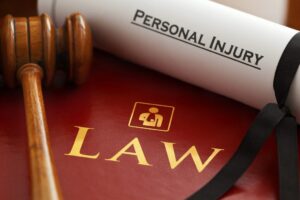Slip and fall accidents can lead to serious injuries, leaving victims to face medical expenses, lost income, and emotional distress. If the accident was caused by a property owner’s negligence, you may be entitled to compensation. Understanding how to prove negligence is essential to building a strong case and holding the responsible party accountable.
1. Understanding Negligence in Slip and Fall Cases
To succeed in a slip and fall claim, you must demonstrate that the property owner’s negligence directly caused your injuries. Negligence occurs when a property owner fails to maintain safe conditions or address hazards in a timely manner. Key elements include:
Duty of Care: The property owner had a legal responsibility to maintain safe premises for visitors.
Breach of Duty: The owner failed to address or warn about hazardous conditions, such as wet floors, uneven surfaces, or poor lighting.
Causation: The hazardous condition directly caused your slip and fall accident.
Damages: You suffered measurable harm, such as medical bills, lost wages, or pain and suffering.
2. Common Causes of Slip and Fall Accidents
Slip and fall accidents often occur due to hazardous conditions that could have been prevented. Common examples include:
Wet or slippery floors from spills or leaks
Loose or uneven flooring
Poorly maintained sidewalks or walkways
Inadequate lighting in stairwells or parking lots
Debris or clutter obstructing pathways
Identifying the specific hazard that caused your accident is a critical step in proving negligence. Learn more about hazards and liability.
3. Collecting Evidence to Support Your Claim
Evidence is the cornerstone of any successful slip and fall case. Key types of evidence include:
Photographs and Videos
Capture images of the hazardous condition from multiple angles. Include pictures of your injuries and the surrounding area to provide context.
Witness Statements
Obtain contact information and statements from anyone who saw the accident occur.
Incident Reports
If the accident happened in a commercial or public space, request a copy of the incident report filed by the property owner or manager.
Medical Records
Document your injuries and treatment. This serves as proof of the harm caused by the accident. See more on proving fault in injury cases.
Learn more about vaccine injury rights in our blog on understanding vaccine injury claims.
4. Establishing Property Owner Negligence
Proving negligence often hinges on showing that the property owner knew or should have known about the hazard and failed to take appropriate action. Consider the following:
Actual Knowledge: The owner was directly aware of the hazard but did nothing to address it.
Constructive Knowledge: The hazard existed long enough that the owner should have discovered and corrected it through regular inspections.
Failure to Warn: The owner did not provide adequate warnings, such as signage, to alert visitors to potential dangers.
Conclusion
Proving negligence in a slip and fall case requires careful evidence collection, thorough documentation, and a clear understanding of premises liability laws. By demonstrating that the property owner failed to maintain safe conditions, you can hold them accountable and seek the compensation you deserve. At DPE Legal, we are dedicated to helping slip and fall victims navigate the legal process and build strong claims. For professional legal assistance, visit our contact page or call Don Edwards at (404) 526-8866 today.




